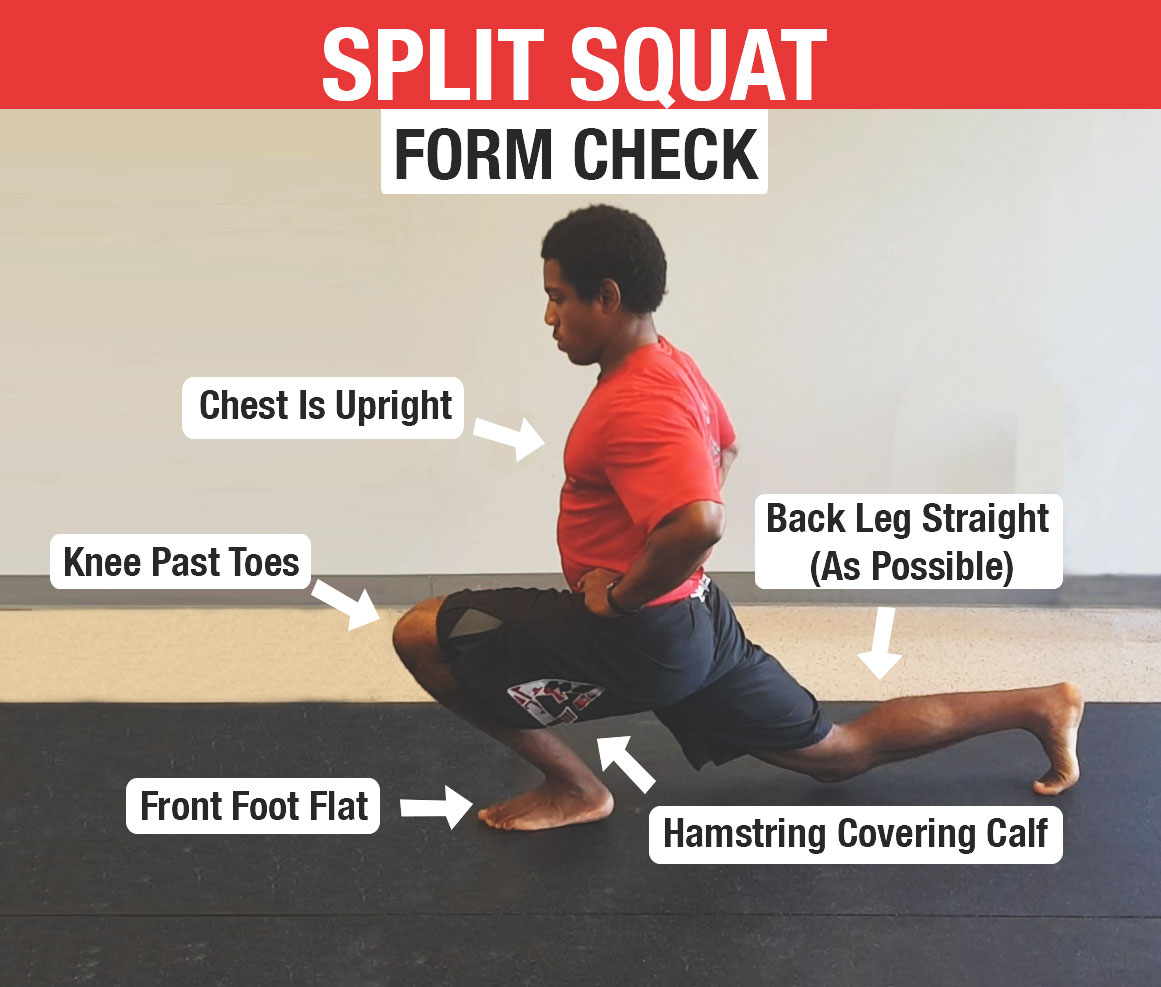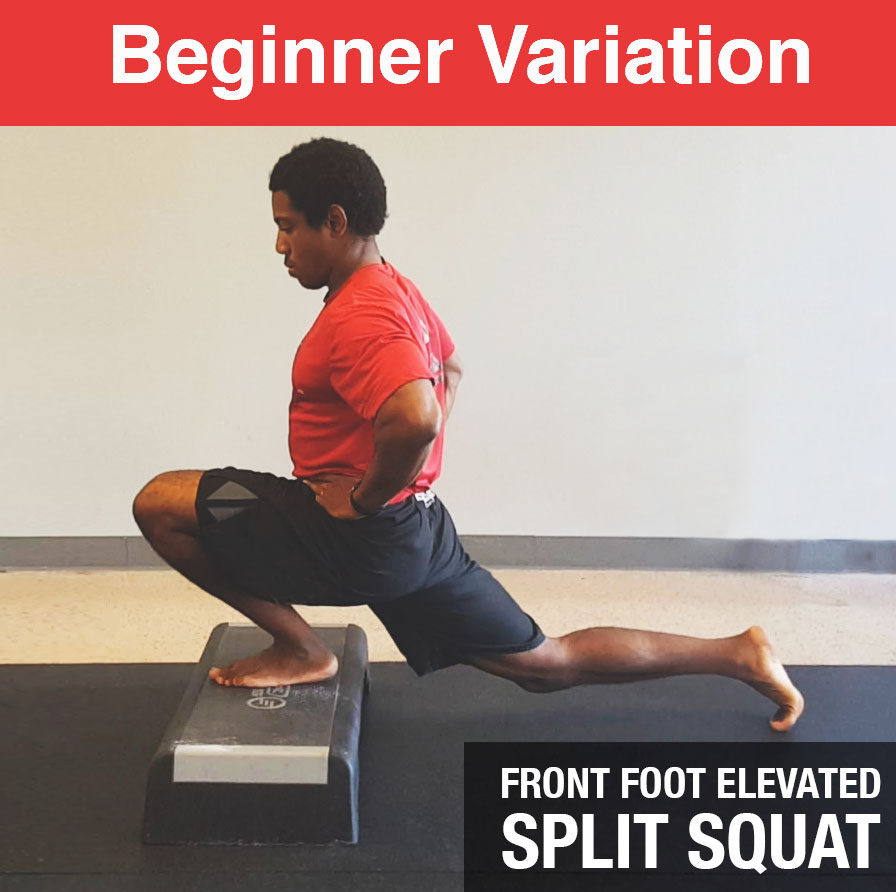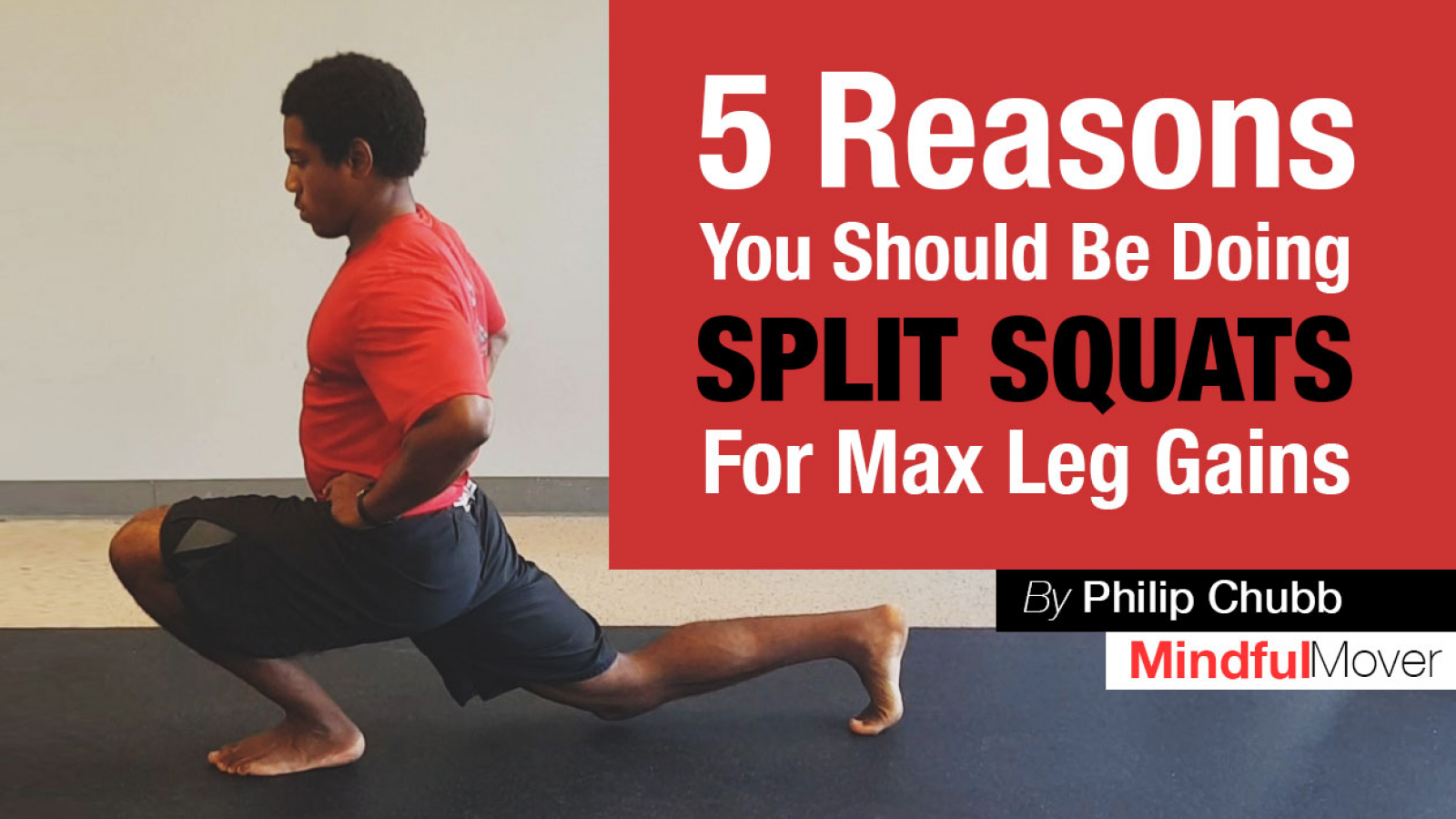Split Squats are one of the most powerful tools in the box when it comes to training legs. They have a whole list of benefits.
MOBILITY
Split Squats are GREAT for increasing lower body mobility. If your goal is to be able to squat lower, be more flexible, and not need a warm up each time you want to get into those deep ranges, Split Squats will be one of your new best friends!
The reason Split Squats are so good for lower body mobility is because they are a loaded stretch. So as you lower down into the movement, the weight of your body and whatever implements you are holding force a bigger stretch on your muscles. In addition to that, your muscles have to work hard to push back out that deep range. When you stretch like this, you teach your body to have strength in those deep ranges of motion that you want. That leads to mobility that last and doesn’t need a warm up every time you want to use it. You spend a few months stretching and then you can maintain it with minimal effort! Sounds like a good deal, right?
PREVENTING IMBALANCES
Split Squats are also great for preventing strength imbalances between the left and right leg. Usually, we have one leg that is a bit stronger than the other. Having one limb that is massively stronger than the other isn’t good for longevity and injury prevention and it’s easy to understand why if we use sprinting as an example:
You’re in a full out sprint and working as hard as you can. Your right leg is exceptionally stronger than your left leg. So while your right leg is capable of pushing off the ground with 100 pounds of force, your left leg is only capable of stabilizing 85. What happens when you land on that left leg then? You get injured and flop around on the floor like a soccer player trying to get a penalty kick. Yet another reason to perform split squats!
STRENGTH AND PERFORMANCE
Split Squats are also a great strength exercise themselves! Now many people find unilateral (one side) work to be for sissies and not as sexy as something like Back Squats, but being athletic takes MORE than just Olympic Lifts, Back Squats and Deadlifts. People have an attachment to these lifts that is stronger than your favorite meal at your favorite restaurant that you never deviate from.
While those are great lifts, they train the legs while they’re underneath you. That is only ONE place your legs can go. You also should train your legs in front of you (like split squats) and while they’re above the ground (step-ups). If you want good performance, you need to branch out beyond the Olympic Lifts, Squats, and Deadlifts and incorporate other lifts as well. Split Squats help here too!
PROGRESSION
Split Squats are also great for progressing into harder movements for beginners. If you try to Back Squat and your lower back rounds like a kid playing in dirt aka “butt wink”, Split Squats can help you progress to doing them correctly.
Split Squats are also a great intro into Lunges which are great for developing power in the lower body!
HYPERTROPHY
Lastly, Split Squats are great for developing hypertrophy (building muscle). Now I know what you’re thinking, “Muscle mass gain? Isn’t that kinda shallow? What would other people think if they knew I wanted to gain muscle to look good?”
Look. There are two kinds of people in the world: People who will admit to wanting to look good naked and people who are liars. That’s it. I haven’t met a single person who was upset at looking better. Split Squats can help you build muscle and look better. And not only does this muscle help you look better, but it also helps improve your health through things like improved insulin sensitivity. So don’t be afraid of being shallow. We all are. Some of us just admit it.
With all these benefits, it’s easy to see why we SHOULD incorporate Split Squats. But to get these benefits, it’s important to incorporate them CORRECTLY. Let’s go over correct execution.
There are five points to a correct Split Squat:

- Keep the chest upright. The chest should not drop forward as this takes a lot of the stretch off the hip flexors which most of us want.
- Keep the back leg as straight as possible. It doesn’t have to be perfectly locked out. But it shouldn’t bend as you lower down
- As you lower, you should lower down and forward at the same time so your hamstrings cover your calves. This gives you the correct range of motion and more mobility benefits. In addition, it’s safer for your knees because of more contact.
- Your knee needs to go past your toes. Now there are some trainers sharpening their pitchforks upon hearing this, but it’s important to understand that your knee SHOULD go past your toes on things like Squats and Split Squats. This ensures proper mobility, safety of your knees, and full range of motion. Keeping the knee behind the toes limits this and limits your gains.
- The front heel should remain flat. Keep the heel down so you get the stretch in the calves that you want!
And there you have it! Correct performance leads to the benefits listed above!
Now what about where you’re starting? If you’re a beginner? You can start by elevating your front leg. Especially if you can’t follow all the form rules listed above. Elevating the front leg can help you work up to a full rep on the ground over time.

Advanced trainees can make the movement harder by elevating their back leg on a step box. Make sure the step box is 4-6 inches and no more!

